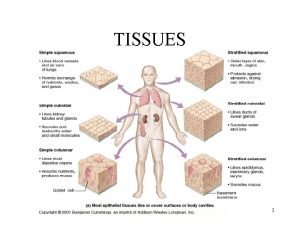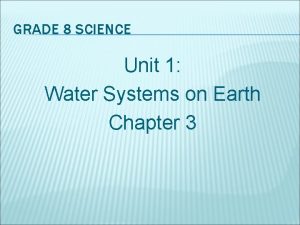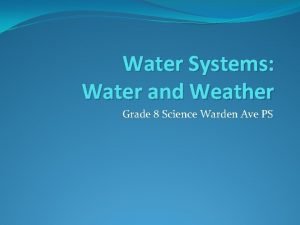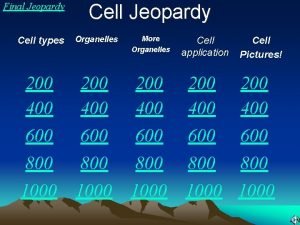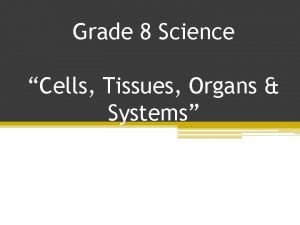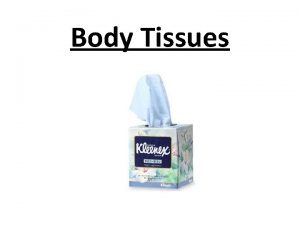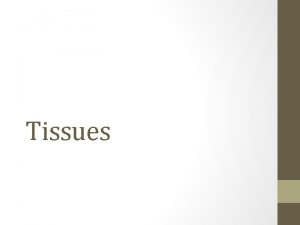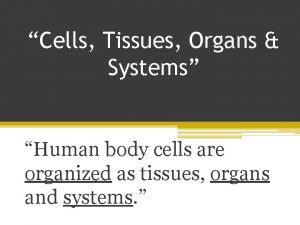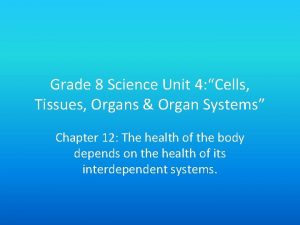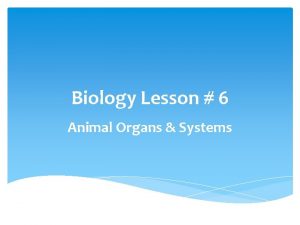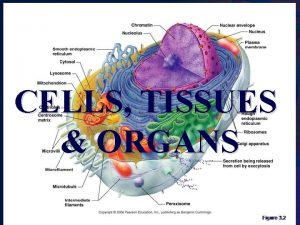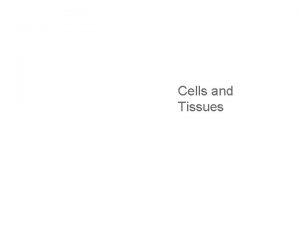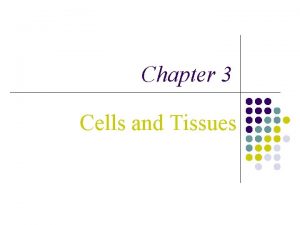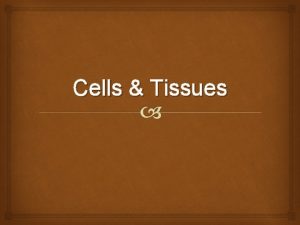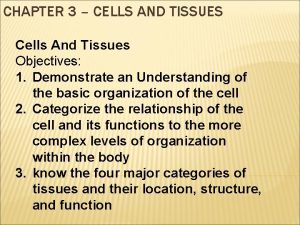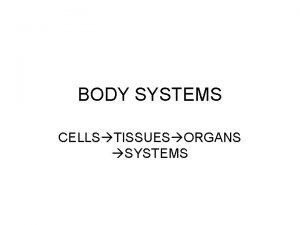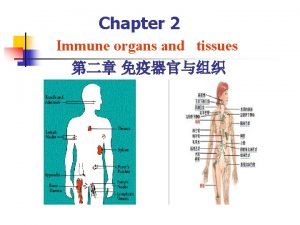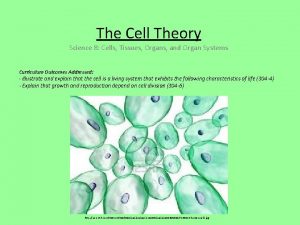Grade 8 Science Cells Tissues Organs Systems Systems
































- Slides: 32

Grade 8 Science “Cells, Tissues, Organs & Systems”

Systems. . . All systems have the following characteristics: • Made up of individual parts that work together as a whole

• Often connected to one or more systems • If one part of a system is missing or damaged, the system will not function well or may not function at all.

Levels of Organization cells tissues Organ systems organisms

Tissues • Groups of similar cells • Found in all multicellular organisms • Ex. Muscle tissue, nerve tissue, epithelial tissue, etc.


Organs • Groups of tissues. Made up of two or more types of tissues. • They are distinct structures that perform specific functions.

• Ex. Lungs, kidneys, heart, etc.

Organ Systems • A group of organs that perform activities that help the body as a whole. • 6 examples of organ systems are. . .

Systems to study 1. 2. 3. 4. 5. 6. Digestive System Circulatory system Nervous System Respiratory System Excretory System Muscular System

Research • We are going to create groups and each group will be responsible to learn about, and then teach the rest of the group about their system by answering the questions given. • Each group will have to make a quick presentation, will need some sort of graphic and a short write up that can be shared with the rest of the class.

The questions to answer are: • What is your organ system? • What is the main function of the system? • What organs, tissues and cell types are involved in the systems function? • How do they all function together? • A graphic of the system within the human body

Rubric • Evaluation Rubric

• You have a limited time to work on this so I suggest that you assign people to roles and give each person a ‘task’ to complete ▫ Ie one person to find organs involved and how they function together, one to make a picture/ structure, one person to find what the system does

1. Digestive System Consists of: • Mouth • Liver • Esophagus • Gall Bladder • Stomach • Pancreas • Small Intestine • Large Intestine

Function: • To take in and break down food, absorb nutrients, and eliminate solid waste.


2. Circulatory System Consists of: • Heart • Arteries, • Veins • Capillaries

Function: • To transport blood, nutrients (chemicals needed for survival), gases and wastes.


3. Nervous System Consists of: • Brain • Spinal cord • Nerves • Sense organs

Function: • To detect changes in the environment and to signal these changes to the body which then carries out a response.


4. Respiratory System Consists of: • Nasal cavity • Trachea • Lungs

Function: • To control breathing, and exchange gases in lungs and tissues.


5. Excretory System Consists of: • Lungs • Kidneys • Urinary bladder

Function: • To remove liquid and gas wastes from the body


6. Muscular System Consists of: • Muscle tissue connected to bones throughout the body.

Function: • To work with the bones to move body parts

 Body tissues chapter 3 cells and tissues
Body tissues chapter 3 cells and tissues Chapter 3 cells and tissues body tissues
Chapter 3 cells and tissues body tissues Body tissues chapter 3 cells and tissues
Body tissues chapter 3 cells and tissues Eisonophil
Eisonophil Chapter 3 cells and tissues
Chapter 3 cells and tissues Cells-tissues-organ-systems-organism
Cells-tissues-organ-systems-organism Tissues are groups of similar cells working together to
Tissues are groups of similar cells working together to Tissues are groups of similar cells working together to
Tissues are groups of similar cells working together to Chapter 3 cells and tissues figure 3-7
Chapter 3 cells and tissues figure 3-7 Chapter 3 cells and tissues figure 3-7
Chapter 3 cells and tissues figure 3-7 Smooth endoplasmic
Smooth endoplasmic A group of cells similar in structure and function
A group of cells similar in structure and function Paranasal sinus at birth
Paranasal sinus at birth Dr saja
Dr saja Parafollicular cells vs follicular cells
Parafollicular cells vs follicular cells How are mitosis and meiosis similar
How are mitosis and meiosis similar Why dna is more stable than rna?
Why dna is more stable than rna? Red blood cells and white blood cells difference
Red blood cells and white blood cells difference What organisms are made of eukaryotic cells
What organisms are made of eukaryotic cells Comparing animal and plant cells venn diagram
Comparing animal and plant cells venn diagram Prokaryotic cells vs eukaryotic cells
Prokaryotic cells vs eukaryotic cells Organelle trail
Organelle trail Masses of cells form and steal nutrients from healthy cells
Masses of cells form and steal nutrients from healthy cells Pseudostratified vs simple columnar
Pseudostratified vs simple columnar Cuál es la diferencia entre la célula animal y vegetal
Cuál es la diferencia entre la célula animal y vegetal Prokaryotic cell wall
Prokaryotic cell wall Nondisjunction in meiosis
Nondisjunction in meiosis Cell substance
Cell substance Talk about your favorite subject at school
Talk about your favorite subject at school Mr collinson grade 8 water systems
Mr collinson grade 8 water systems Grade 8 science water systems
Grade 8 science water systems Organelle that modifies packages and transports
Organelle that modifies packages and transports Specialized connective tissues
Specialized connective tissues







